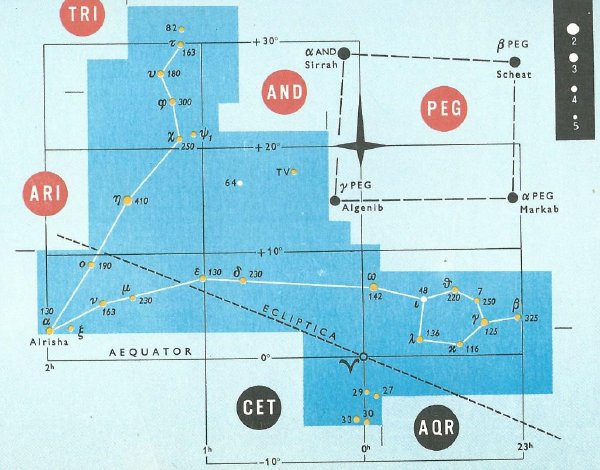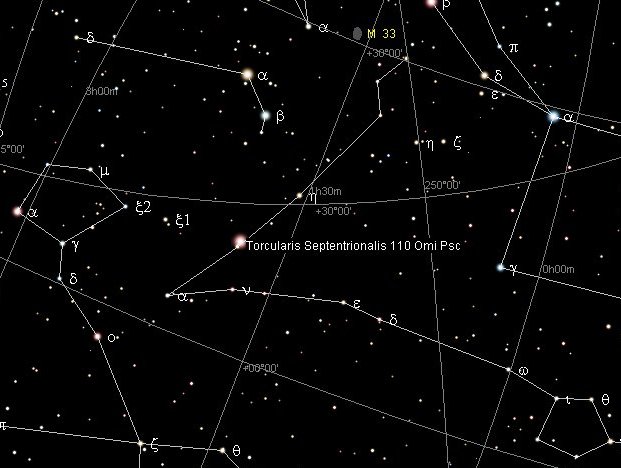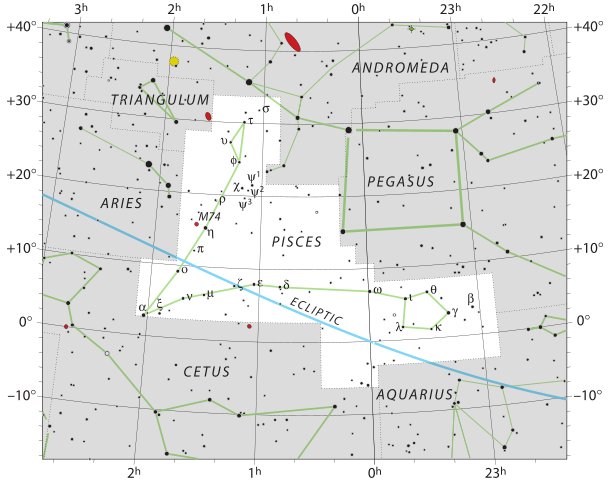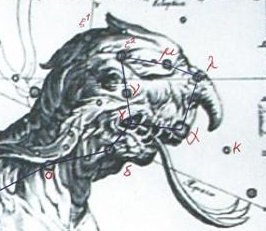98. Thus, in the evening of March 8 (67) AD 2023 the planet Venus would have been visible close to Revati (ζ Piscium, *16) and in the evening of June 6 (157) AD 2024 (a year + 90 days later) the planet Mars will be at 110 Piscium (ο Piscium,*20):
Why has not Revati been mapped in my old astronomy book, viz. precisely where the ecliptic is crossing the line for the Southern Fish? We should avoid questions, in due time will come the revelations.
Should we not then move on to Aries? Another question! No, we have yet to discuss why Evening Star Venus should be at March 8 - I am assuming it was not 'by chance'. ... Sirrah would return to visibility after its close encounter with the blinding rays from the Sun at the time as when the Sun reached Revati (*16). Thus Revati was located *16 + *16 = *32 right ascension days after Markab Pegasi ...
If heliacal Sirrah would become visible 16 days later at heliacal Revati, and Revati become visible another 16 days later at the heliacal Head of the Sea Beast (Cetus), then the ideal place for returning to visibility of all the heliacal stars located at April 6 ought to be at ξ Ceti. But should this rule of thumb not include Evening Star Venus at the time when she 'happened to be' at Revati?
Possibly not, because the synodic cycle of Saturn is 378 days which 'happens to be' 181 (→ Sirius) + 181 + 16.
|
|||||||||||||||||||||||||||||||||||||||||||||||||||









